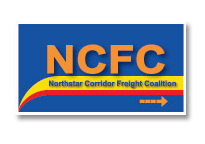State Rail Plan Resurgence, Overcoming the Oxymoronic
Tue, 07/06/2010Acess to the newly available federal funding requires a State Rail Plan, hence, the resurgence. The term "state" in "State Rail Plan," in most cases is something of an oxymoron; and, fortunately, those responsible for the new State Plans are at least beginning to embrace to the idea that rail planning requires looking beyond their own state's borders.
For example, planning for lighter density lines in East Central and Northern Wisconsin is largely an exercise in futility without considering the future of lines in Upper Michigan. Critical volumes of anchor traffic on the lines in eachstate originates or terminates in the other. The character of the railroad operating those lines and willingness to compete for such local and regional traffic is core to their survival.
Meaningful planning requires taking a long view beyond the border of one's political jurisdiction. In the heyday of highway building, it may have been sufficient planning to assure that highways met at the state's borders. Not so for rail planning. Railroads, by their nature, are more of an integratedsystem. How railroads functions in one's own state may, to a large extent, be determined by what is happening in a neighboring state or in several states away. This fact and an anticipation of an increasingly important role of rail and intermodal inthe future of the Nation's freight transportation system was a key factor motivating the Central Corridors initiative and, we believe, organization of the Mississippi Valley Freight Coalition.
CCFC has two recommendations for inclusion in State Rail Plans in the Upper Midwest Region:
- Address the capability and commitment of rail carriers serving lighter density lines in the MVFC region to compete for market share including "single car" retail rail service, intermodal connections, purely local movements (single car and volume), and traffic to and from gateways which are relatively short haul; and
- Local intermodal transfer facilities and support for access via rail to the newly enhanced intermodal and double stack network being constructedby the Eastern Class 1 railroads, CSX and Norfolk Southern.
Competing to Provide Retail Rail Service: A State Rail Plan might address this issue as a separate "topic" or a sub-topic under "freight rail," addressing development abd articulation of the following policy:
To promote, foster, adopt and establish incentives, conditions and organizational structures
for rail carriers to actively and aggressively compete for market share for freight originating
and/or terminating in markets served by lighter density rail lines.
This formulation is intended to encompass "single car" retail rail service, intermodal connections, purely local movements (single car and volume), and traffic to and from gateways which are relatively short haul.
An example of such an "incentive" is Canadian National's recent announcement, in combination with Pacific Carbon Trust, of establishment of a modal shift protocol that will create carbon offset project opportunities in British Columbia. This example, as well as illustrating an "incentive" for modal shift generally, may have particular application in promoting a modal shift (all highway to truck-rail) for wood fiber and biomass traffic generated in Northern Wisconsin, Upper Michigan, Minnesota and other wood basket areas.
The example is particularly apt as a means of accelerating or jump-starting long term modal shifts that face threshold economic, regulatory, cultural or other inertial obstacles to the modal conversion.
Local Access to Eastern Intermodal and Double Stack Network: This is an upcoming issue of relevant to the northern and western tiers of states of the MVFC region. The same State Rail Plan policy suggested above addresses this issue as well.
For example, for Wisconsin and Minnesota, the issue is one of overcoming geographic disadvantage accessing key traffic lanes of the national rail transportation system. Wisconsin currently has no local access to truck-rail-truck intermodal transfer facilities and no rail carrier interested in such facilities or providing access via rail to the developed or developing intermodal and double stack networks on the national Class 1 rail system.
With the increasing importance truck-rail intermodal will play in future freight transportation networks, shippers and receivers in areas served largely by lighter density rail lines should not be relegated to accessing intermodal only through transfer facilities located in other states. The longer dray hauls to and from such transfer facilities are a distinct disadvantage. Particularly, as the Eastern Class 1 railroads, CSX and Norfolk Southern are investing in a new network of intermodal facilities and double stack traffic lanes, Wisconsin freight shippers and receivers need to be able to access this new and enhanced network via short truck dray hauls to and from intermodal transfer points located in Wisconsin.



